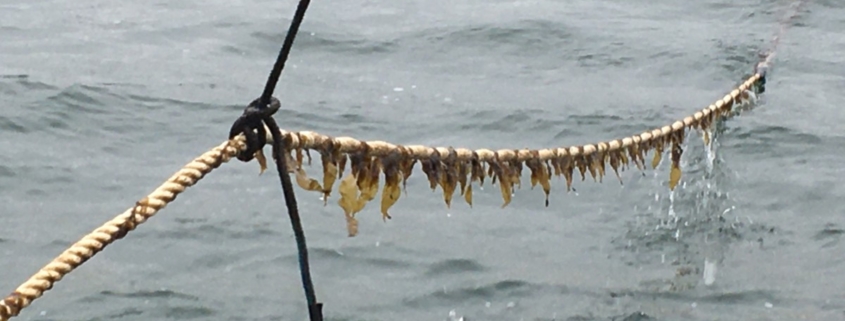Real Farmers Farm Kelp
We all know that winter is the off-season for gardeners and farmers, since cold, short days are good for planning the next year’s crops, but not for planting, tending or harvesting. Not true for the seaweed farmers; they welcome the cold. Kelp, a type of seaweed, is a winter crop, and so kelp farmers from Connecticut to Maine are out on the water now, seeding, tending and caring for the crop.
The SoundWaters team, with training and help from the experts at GreenWave, planted our first crop ever in late December, laying out strings of kelp seed along lines held by buoys, which are anchored by moorings. A kelp farm resembles a vineyard, but under the water and with the seaweed growing down.
One of the many challenges of seeding kelp is temperature. Cold water is ideal, but cold air can kill kelp seedlings, so the trick is to get the seed into the water quickly, while maneuvering a boat among the different lines and buoys. When we checked the farm this week, the seed had taken, with a good crop growing along three lines.
The Perfect Crop?
As opposed to farming on land, kelp requires no additional inputs: no fertilizer, no water, no herbicide. From an ecological perspective, it’s a perfect crop. In fact, rather than adding chemicals to the ecosystem, seaweed actually does the opposite as it naturally removes excess nitrogen from the Sound. Our student interns will study the rate of growth and compare how different factors, such as plant depth and water conditions, affect the crop. Growing seaweed is a great case study in finding new ways to live, work and eat sustainably.
Throughout the winter, SoundWaters staff and students will be out to check on the farm. We’ll be sending out periodic updates on the crop and the many ways our harvest will be used to make the Sound, and seaweed, part of our everyday lives.




